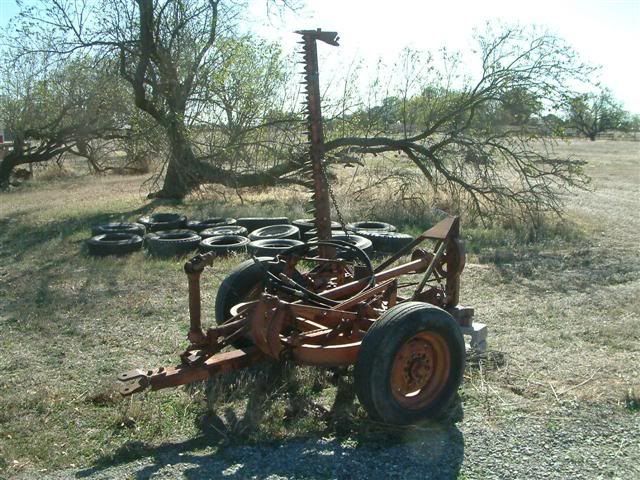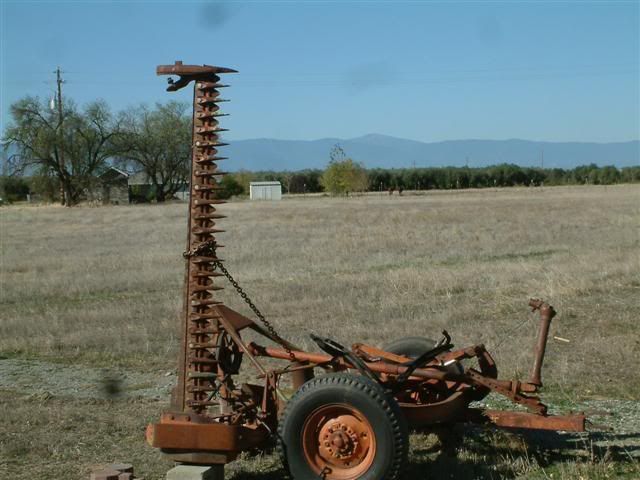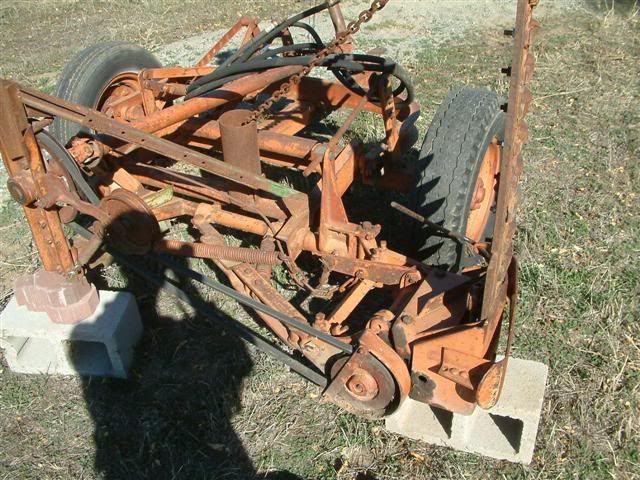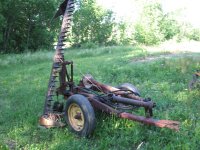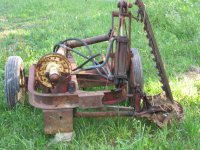CaptainQ said:
I want to buy a older used sickle bar mower to cut about 4 acres of bermuda hay. What do i look for as far as worn items, how do i tell if the bar and associated parts are worn, keep in mind that I know nothing about them. I can look for worn bearings and thing like that but i know nothing about the bar and working parts. Also do you have any advice on certain brands and models to get and about how much I need to pay I am in west tennessee.Any tips on operating and setting would also be appreciated.
Thanks
As Art mentioned, belt drive is preferable. Pitman drives are a bit delicate and tempremental. In general, most pitman drive sickle bars don't want to operate at anything other than parallel with the ground. Some will do otherwise, but most are usually being abused if you do. MOST belt drives will operate at a few degrees below parallel, and quite a bit above parallel with the ground. That's valuable when trimming pond banks, ditches, ect.
The first thing to look at, and the most common routine maintenance item will be the sections. That's the individual "tri-angle" knife blades. They wear out. Once upon a time, people sharpened them. Nowdays it's simpler to replace them. If you get to that point, post back again and I'll be glad to walk you through the process of changing them. It gets easier with practice, but isn't all that difficult to begin with.
Next, check the "gaurds". That's the "teeth" that stick out from the cutter bar. They can get bent (up or down) and cause havoc. An integral part of the gaurd is the LEDGER PLATE. These used to be replaced as needed, but have over time became more or less permanent parts of the gaurd. They are the serrated edge that the work in conjunction with to cut your hay. The section needs to run very close, but not in tight contact with the ledger .
You'll also find HOLD DOWN CLIPS that bolt to the cutter bar to hold the section bar in adjustment relative to the ledger plates. The hold down clips wear, albiet not nearly as fast as the sections or ledger plates.
Some sickle bar mowers need to be "indexed" or "registered". That's where the sections are at the right spot at certain points in the cutting stroke.
Sickle bars are one of many machines that almost demend you own the manuals that apply. Steps to correctly tune one are in the manuals.
Confused yet?
Best advice is to get (A) a common mower that more folks are familiar with. That improves your chances of getting help with fine tuning it. (B) get owners manual, a service manual if one is available for the model mower you choose, and even a parts manual. They're every bit as handy as the other 2 manuals. Among other things, they always show an exploded view which is handy dis-assembling and re-assembling anything. (C) if you aren't familiar with a sickle bar, I'd highly recommend finding a complete, funtional mower that needs little in the way of repair. Basket cases will make a beginner pull hair out in clumps.
Models I'd suggest. (1) New Holland model 451. Simple, common, very easy set-up, parts common as dirt. (2) John Deere model 350 A little more complicated than a 451NH, but an extremely good mower. Not many ways to beat Deere's parts availability. (3) Massey Ferguson #41 Dyna Balance. Built for MF by Vermeer. Parts can be a little "iffy", but a very smooth running mower that's extremely easy to hitch and unhitch from the tractor. (4)515 Ford A pitmanless version of the classic 501.
Sickle bar mowers require very little hp. A 20 hp tractor can handle a 7' to 9' mower so long as it has enough "heft" to handle the weight hanging off to the side.
Care and maintenance can make a sickle bar go on and on. I've been using the same New Holland 451 for 32 years. It's cut a BUNCH of hay!
